Related Practices
Federal District Court Holds Engineer Is Qualified Enough, and His Methods Are Reliable Enough, to Testify to Date Wind and Hail Caused Roof Damage
The Zelle Lonestar LowdownFebruary 19, 2025
In Wings Platinum, LLC v. Westchester Surplus Lines Ins. Co., No. 3:23-CV-2145-D, 2025 WL 391388 (N.D. Tex. Feb. 4, 2025), a federal district court recently held that an engineer with one year and one month of experience inspecting roof damage was sufficiently qualified, and that his method for determining the date of wind and hail damage to a roof was sufficiently reliable, to testify as an expert under Federal Rule of Evidence 702.
Wings Platinum, LLC (“Wings”) submitted a claim for property damage arising out of a wind and hailstorm, so Westchester Surplus Lines Insurance Company (“Westchester”) investigated the claim by, in part, retaining engineer Robert J. Herrera of Stephens Engineering.[1] Mr. Herrera inspected the property, reviewed forensic meteorological data of wind and hailstorms in the area, and relied on his experience to conclude that fractures observed on the roof’s thermoplastic membrane were caused by a wind and hailstorm occurring prior to the insurance policy’s effective dates. Based in part on Mr. Herrera’s conclusions, Westchester denied Wings’ claim.[2] Wings then filed suit against Westchester in Texas state court for breach of contract, breach of the duty of good faith and faith dealing, and violations of the Texas Insurance Code. Westchester removed the suit to a federal court in the Northern District of Texas, Dallas Division, and named Mr. Herrera as a testifying expert.
Federal Rule of Evidence 702 governs whether a witness may testify as an expert. Under Rule 702, federal courts may admit expert testimony if the party offering it shows by a preponderance of the evidence that (1) the witness is qualified to be an expert by virtue of knowledge, skill, experience, training, or education, (2) the witness’s testimony is relevant, or helpful to understanding evidence or determining a fact in issue, and (3) the witness’s testimony is based on reliable principles and methods.[3]
Wings moved to strike Mr. Herrera’s opinions and testimony, arguing that Westchester did not establish either his qualifications as an expert or the reliability of the methods underlying his testimony. Wings specifically argued that Mr. Herrera was not qualified to testify because he only had one year and one month of experience inspecting roofs for damage in his entire career, so he had “insufficient training” to be an expert.[4] Wings also argued that Mr. Herrera’s opinions on when wind and hail caused roof damage were not reliable because they were “subjective” and lacked any “rubric, metric, or standard” by which to duplicate, test, or otherwise judge them.[5]
In a memorandum opinion and order, the court denied Wings’ motion to strike Mr. Herrera’s opinions and testimony. The court held that Mr. Herrera was qualified to be an expert by virtue of his on-the-job training with Stephens Engineering. The court found that Mr. Herrera had inspected around 200 buildings for storm damage by the time he first inspected Wings’ property, and around 750 buildings by the time he submitted an affidavit to the court supporting his qualifications as an expert, which was sufficient experience to qualify as an expert.[6] The court also held that Mr. Herrera’s testimony was based on a reliable method because past case law had already determined that the method—inspecting the property, reviewing forensic weather data, and applying his experience to the facts to reach his conclusion—was reliable.[7] As such, the court denied Wings’ motion, and Westchester will be permitted to call Mr. Herrera as an expert witness to testify should the case go to trial.
This case illustrates that some arguments go to the “weight” or persuasive effect of an expert’s testimony, while other arguments go to the “admissibility” of the expert’s testimony in the first place. Here, Wings argued that Mr. Herrera was not “highly qualified,” but Westchester only needed to show he was qualified, and after around 750 roof inspections in over a year, Mr. Herrera met that threshold. Additionally, the court’s opinion suggests that federal courts in Texas applying Rule 702 generally regard Mr. Herrera’s method for dating wind and hail damage to roofs as reliable. As a consequence, parties retaining engineers to inspect wind and/or hail damage to roofs might expect an easier time proving the reliability of element of Rule 702. Parties might also expect future motions to strike engineers as expert witnesses in cases like this to focus on the engineer’s qualifications and the relevance of their opinions.
_______________________________
[1] Wings Platinum, 2025 WL 391388 at *1.
[2] Id.
[3] Id. at *1–2.
[4] Id. at *3.
[5] Id.
[6] Id.
[7] Id. at *4 (citing Kim v. Nationwide Mut. Ins. Co., 614 F.Supp.3d 475, 488 (N.D. Tex. 2022); Kahlig Auto Grp. V. Affiliated FM Ins. Co., No. SA-19-CV-013150-DAE, 2021 WL 148056, at *4 (W.D. Tex. Jan. 15, 2021); and TBC-JP-LR, JV v. Allied Prop. & Cas. Ins. Co., No. 4:17-CV-131-Y, 2018 WL 10562785, at *4 (N.D. Tex. Sept. 28, 2018)).
